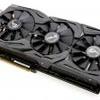DX12: FCAT Frame Experience Analysis Rise Of The Tomb Raider
With a benchmark technology called FCAT on the following few pages, we will look into Frame Experience Analysis. With the charts shown we are trying to show you graphics anomalies like stutters and glitches in a plotted chart. Lately there has been a new measurement introduced, latency measurement. Basically it is the opposite of FPS.
- FPS mostly measures performance, the number of frames rendered per passing second.
- Frametime AKA Frame Experience recordings mostly measures and exposes anomalies - here we look at how long it takes to render one frame. Measure that chronologically and you can see anomalies like peaks and dips in a plotted chart, indicating something could be off.
| Frame time in milliseconds |
FPS |
| 8.3 | 120 |
| 15 | 66 |
| 20 | 50 |
| 25 | 40 |
| 30 | 33 |
| 50 | 20 |
| 70 | 14 |
We have a detailed article (read here) on the new FCAT methodology used, and it also explains why we do not use FRAPS anymore.
Frametime - Basically the time it takes to render one frame can be monitored and tagged with a number, this is latency. One frame can take, say, 17 ms. Higher latency can indicate a slow frame-rate, and weird latency spikes indicate a stutter, jitter, twitches; basically anomalies that are visible on your monitor.
What Do These Measurements Show?
Basically, what these measurements show are anomalies like small glitches and stutters that you can sometimes (and please do read that well, sometimes) see on-screen. Below, I'd like to run through a couple of titles with you. Keep in mind that average FPS matters more than frametime measurements.
Rise of the Tomb Raider Frame Experience Analysis
Above, a percentile chart of the first 31 seconds @ 2560x1440 of the benchmark recorded. In this particular chart we plot FPS and place it in relation to percentiles. This is the dirtribution of your frames. 20% is doing 180 FPS, and 90% of the frames offers roughly 100 FPS.
Now we move to latency measurements (frame-times). Above, the card at 2560x1440. On this 31 second run the graphics card manages extremely well; as you can see, there are no stutters recorded. At the end what you see is a scene change, it is not an anomaly. An occasional framedrop is normal. please understand that this plot is based up-on almost 2000 frames.



